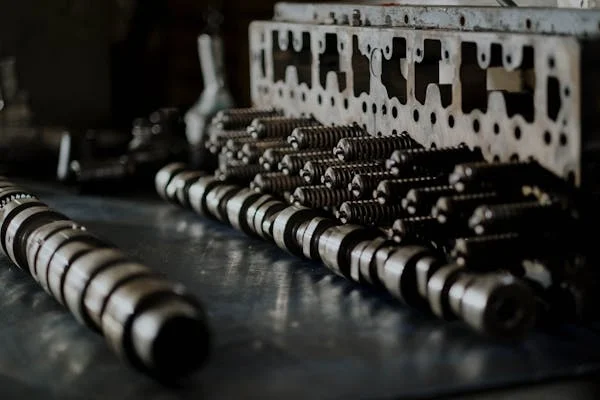
When it comes to vehicle suspension systems, the rigid axle suspension system—also known as the solid axle or live axle system—remains one of the most durable and dependable setups, especially for off-road vehicles, trucks, and older model cars. Though independent suspension systems dominate today’s passenger cars, the rigid axle setup still plays an essential role in many modern applications where strength, simplicity, and cost-effectiveness are priorities.
What Is a Rigid Axle Suspension System?
A rigid axle suspension system connects the left and right wheels via a single, solid beam or shaft. This means that any vertical movement on one wheel directly affects the other. Unlike independent suspension systems, which allow wheels to move independently of each other, the rigid axle keeps them linked.
This design has long been popular in rear-wheel-drive vehicles, especially in heavy-duty trucks, off-road vehicles, buses, and commercial vans due to its ability to handle heavy loads and endure rough terrain.
Key Components of the System
The rigid axle setup includes:
- Axle Housing: The solid shaft or casing connecting the wheels.
- Leaf Springs or Coil Springs: These absorb shocks from road irregularities.
- Shock Absorbers: Dampen the oscillations created by the springs.
- Control Arms and Panhard Rods (Optional): Keep the axle centered and reduce lateral movement.
Because of its simplicity, this system has fewer moving parts than independent systems, making it easier and more affordable to maintain and repair.
Advantages of the Rigid Axle Suspension System
- Durability and Strength:
Rigid axles are incredibly tough, making them ideal for applications where strength is essential. Trucks and SUVs that face rough terrains often depend on rigid axles for their ability to withstand abuse. - Load-Bearing Capability:
Vehicles carrying heavy loads benefit from rigid axle systems due to their stable support and equal load distribution across both wheels. - Low Maintenance Costs:
With fewer moving parts, the rigid axle system tends to have lower maintenance needs. The parts are usually straightforward and affordable to replace. - Improved Traction Off-Road:
When off-roading, the rigid axle allows for better articulation and even pressure on both wheels, making it easier to maintain traction on uneven surfaces.
Disadvantages to Consider
While rugged and reliable, the rigid axle system is not without its drawbacks:
- Ride Comfort:
Since both wheels are connected, bumps on one side affect the entire axle, resulting in a less smooth ride than independent systems. - Handling Limitations:
The rigid design can reduce handling precision, especially during high-speed cornering, making it less suitable for performance vehicles. - Increased Unsprung Weight:
A heavier axle increases the unsprung weight (parts not supported by the suspension), which can negatively affect ride quality and response.
Common Uses Today
Even though modern sedans and crossovers mostly use independent suspensions, rigid axle suspension systems still dominate in:
- Pickup Trucks:
Trucks like the Ford F-150, Toyota Hilux, and Ram 1500 often feature rigid axles at the rear to carry heavy payloads. - SUVs and Off-Road Vehicles:
The Jeep Wrangler, Land Rover Defender, and many Toyota Land Cruiser models continue to use solid axles for their off-road reliability. - Commercial Vehicles:
Delivery vans and buses rely on rigid axles to handle weight and daily wear and tear.
Rigid Axle vs. Independent Suspension
Understanding the trade-offs between a rigid axle and an independent suspension system is essential when choosing a vehicle.
| Feature | Rigid Axle | Independent Suspension |
| Comfort | Lower | Higher |
| Load Capacity | Higher | Moderate |
| Off-Road Performance | Excellent | Moderate to High |
| Maintenance | Easier and Cheaper | More Complex and Costly |
| Handling | Less Precise | More Precise |
While independent systems are better for smooth rides and handling, rigid axles are unbeatable for work vehicles and off-road capability.
Future of the Rigid Axle Suspension System
As automotive technology advances, many manufacturers are experimenting with hybrid designs that combine elements of both rigid and independent systems. For instance, some new SUVs feature a rigid rear axle but with modern coil springs and adaptive dampers to improve comfort without compromising strength.
In electric vehicles, where weight distribution is different and regenerative braking is a factor, traditional suspension layouts—including the rigid axle—are being reconsidered and, in some cases, redesigned for the new generation of vehicles.
Conclusion: Is a Rigid Axle Suspension Right for You?
If you’re purchasing a vehicle for utility, towing, or off-road use, a rigid axle suspension system remains a top choice. It offers superior durability, easier maintenance, and excellent performance under heavy loads or tough conditions. However, if comfort, agility, and precision handling are more important to you, then a vehicle with an independent suspension may be more appropriate.
Whether you’re a commercial driver, off-road enthusiast, or someone who values simplicity in vehicle maintenance, understanding the benefits of the rigid axle system helps make an informed decision.




